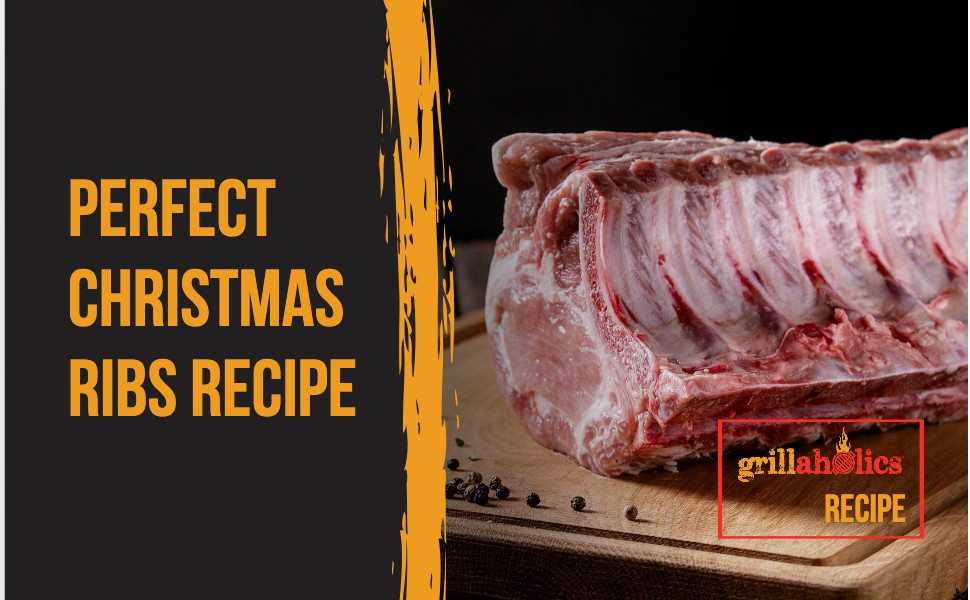There are a few different versions of ‘Christmas Ribs’, depending on who you ask. For many, roasting some baby back ribs and slathering them in a cranberry sauce constitutes ‘Christmas Ribs’. While that is absolutely delicious, it’s not exactly the traditional version of the dish. In fact, Christmas Ribs are an old-world dish that is more ‘pork belly’ than ‘rib roast’. They feature a crispy, incredible skin and an absolutely indulgently rich texture of rendered fat which combine to make a roast unlike any other. Today, we’re going to take you through some of the ins-and-outs of this classic, and give you the lowdown on making Christmas Ribs yourself.
Instead of just using spare ribs, a whole rib is used, which creates a rich, juicy roast that is (in our opinion) near-unrivaled in its deliciousness. Typically, the rib is served alongside equally indulgent side dishes like roast potatoes, gravy, Christmas sausage, and stewed/candied apples.
Cooking the rib itself is a fairly straightforward process, but a lot of people have trouble with crisping up the pork rind. This is a crucial part of a properly done Christmas Rib -- that crunchy, bubbly, crispy skin. All in all, the dish isn’t too far from a nicely roasted, skin-on pork belly. With all of that said, let’s get cooking.
Preparing The Ribs
You’re gonna need a few things for this Christmas recipe. First, get a whole pork rib with the skin on. While it’s not a particularly hard-to-find piece of meat, you may have to visit the specialty store to get it done right. Before cooking, you’ll want to saw through the bones perpendicularly, just to make them easier to pull apart when serving time comes. On the other side, score the rind in a criss-cross pattern. The butcher may be willing to do all of this for you, if you want to skip that piece of slicing and dicing.
From here, heavily salt and pepper the top of the rib. Don’t be shy -- this type of whole protein can handle plenty of seasoning. You’re going to want to let this rib sit overnight (in the fridge, of course) once it’s nice and seasoned. If you have a rub you want to use, apply that before letting the rib rest overnight.
Roasting The Ribs
The next day, put your rib in an oven pan with the rind up. Place a small, heat-proof plate or shallow bowl under the rib in the pan, elevating the center of the protein. This will create a slope that will allow your rendered fat to run off, effectively basting the entire rib in the process.
After that, pour a cup of water into your roasting pan and cover it tightly in foil. Roast this at 450 degrees for 40 minutes. When it’s through, the rind will look spongey and puffed up -- not appetizing, but stick with us.
Finishing The Ribs
Remove the foil and turn the oven down to 400 degrees. Put the uncovered rib in the oven and roast until the rind is bubbly, crispy, and crunchy. For the last fifteen minutes, crank that oven up to 450 again to get a little bit of extra crunchy texture. From there, let the rib rest for a good 20-30 minutes. If you want to finish your ribs off with a cranberry glaze, that’s absolutely okay. In fact, to make a super easy cranberry glaze takes just 3 ingredients!
1 cup jellied cranberry sauce
1/2 cup orange juice
1/4 cup packed brown sugar
Add al the ingredients in a sauce pan, stirring regularly over medium heat until the glaze thickens.
From there, just baste your pork ribs with this glaze and cook for an additional 15 minutes after removing the foil in the last step, let it rest, and serve the glaze as a side as well!
And then… you’re good to go...dig in!

